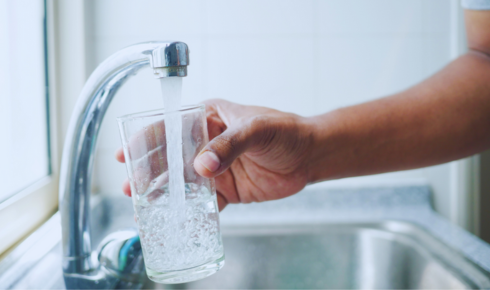The Surprising Science Behind Hard Water: Why Softening Matters More Than Ever

Key Takeaways
- Hard water can significantly affect health, appliances, plumbing, and daily routines, often leading to higher expenses and more cleaning headaches.
- Testing your household water quality is affordable and straightforward. It provides the critical first insight necessary for choosing effective solutions.
- Using a water softener system can improve water quality, simplify cleaning, and extend the lifetime of plumbing and household machines.
- There is no single softening solution for everyone—knowing your unique needs makes all the difference when selecting a system.
- Understanding the mineral content of your local water source helps you make better decisions regarding your water treatment investments.
- Even the best-designed softening system performs best with regular care and periodic water quality checks.
Table of Contents
- What Is Hard Water?
- How Hard Water Affects Daily Life
- Testing for Hardness: The First Step
- The Science of Water Softening
- Choosing the Right Softener
- Soft Water, Health, and the Environment
- Maintenance Tips for Long-Term Success
- Future Trends in Water Softening
What Is Hard Water?
Practically everyone cannot ignore the effects of hard water, as evidenced by stubborn spots on glasses or the roughness that occurs when freshly washed hair. Hard water is a term used to refer to quantities of water with an elevated amount of calcium and magnesium, among other minerals, acquired in the process of moving along the soil, limestone, and underground water reservoirs. The accuracy of hardness measurements can vary significantly depending on the region and the source of water from that region. Water may have an abundance of minerals that cause the heavy buildup of white deposits on plumbing fixtures and appliances. This constant deposition of minerals, albeit not as significant a health risk as outlined in the EPA’s list of regulated drinking water contaminants, causes obvious inconveniences throughout the entire house. Quality-of-life issues and appliance headaches have fueled the need for adjustable solutions, such as water softeners Tampa, which allow homeowners to reclaim control over their water’s behavior.
Not paying attention to hard water is not only about some additional scrubbing. Scale and mineral deposits can clog shower heads, shorten the lifespan of dishwashers, heaters, and washing machines, and even cause tap water to taste and look unappetizing. To most households, starting the journey of cleaning effortlessly and paying reduced utility bills begins with determining whether and how hardness influences their unique supply of water.
How Hard Water Affects Daily Life
The scope of complex water problems is often predatory, and it tends to affect virtually all aspects of household activities. It begins with harmless things such as spots and streaks on dishes and shower doors, which never even leave. It is that giveaway film, yes, the film, that results in what is also called a chemical reaction: soap mixes with calcium in hard water to make scum rather than lather. The aggravation increases when clothes come out stiffer, dyes fade, and after-shower skin does not feel as rejuvenated. These small nuisances eventually become significant bills as deposits of minerals accumulate inside appliances and water piping, leading to a loss of efficiency or even the outright failure of the products. According to research undertaken by the Water Quality Association, water heaters operating in harsh water conditions become up to 24 per cent less efficient than those that receive treated water (softened water) within a shorter duration, resulting in higher utility costs and more expensive repairs.
1.Observable white or chalky-looking deposits on bathroom fixtures and dishes that do not respond to conventional cleaning efforts
2.Frequent blockage of showerheads or low flow of water because of mineral deposition.
3.Towels and fabrics often feel rough or lousy, even when washed with expensive detergents.
4.Bad feelings on the skin, e.g., dryness or itchiness
5.The frequency of repairs and renovations for water-using appliances is on the rise.
In households with hard water, these minor irritations change how people budget for cleaning products and how often they replace their home’s essentials.
Testing for Hardness: The First Step
Testing the mineral content of your water is the initial and most crucial step in addressing the complex challenges faced with water. Test kits are now very affordable and easy to use in any modern home: add water to a cup, insert a test strip, and compare the result with a table. The tests indicate the accumulation of hardness-generating minerals, typically measured in units of grains per gallon (mpg) or milligrams per litre (mg/L). To be more accurate, most homeowners pay attention to the local water utilities, where public reports on water quality are available, and monitor the levels of mineral content, contaminants, and monthly fluctuations. People relying on rural water systems or their wells should retest regularly, as local conditions can result in significant fluctuations in water quality from season to season.
1.Test the water in every location (kitchen, bathroom, and outside spigot) to detect any differences.
2.Please record it to track trends over several months or years.
3.After primary weather conditions or healthy maintenance, a snapshot will be given that is as accurate as possible.
The information on your water’s unique mineral content is the basis for making a confident decision regarding treatment and prevention, and it can save you money in the long term.
The Science of Water Softening
Water softening is as much chemistry as it is common sense.The highest profile is the salt-based system for ion exchange softening, in which a chamber filled with charged resin beads pulls unwanted substances, such as calcium and magnesium, as they pass through. These complex ions exchange with sodium and potassium ions on the resin. The effect of this is that the harmful minerals remain in the tank, and the outflowing water becomes soft and easy to clean. Since they are smaller, the durability of the appliances, as well as the pipes, increases considerably, and the daily cleaning of the house does not require much effort.
There are also advanced salt-free systems, including template-assisted crystallization systems. This equipment transforms hardness minerals into tiny crystals that cling to surfaces and remain in the water, effectively eliminating scaling. The technique is helpful in sensitive areas of the environment or where sodium is not welcomed. Both methods make a significant difference, as homeowners no longer need to deal with soap scum issues, and they also save on costly appliance replacements.
Choosing the Right Softener
The market for softeners offers various models, depending on the size of the home and usage pattern. Salt units are predominant in cases of problem water (i.e., hard water) or high-use systems and are applauded for their capacity to leach away nearly every hardness mineral. They make a perfect combination of comprehensive protection against scaling. Salt-free models, although not removing hardness, are effective in mild to moderate conditions or where it is difficult to dispose of salt due to a regulatory or environmental challenge. When purchasing, prioritise NSF/ANSI Standard 44 certifications to ensure you achieve optimal results while adhering to the best safety practices. Likewise, inquire about maintenance requirements and changing filters to ensure that the unseen expenses do not rise with time.
1.Salt-based: Suitable for the most demanding hardness, contributes little sodium, and needs constant salt replenishment.
2.Salt-free: systems offer high protection for pipes, require minimal maintenance, and are not recommended for areas with high mineral levels.
3.Dual-tank or large-capacity models: types provide a constant, continuous supply of soft water during peak demand in a household.
The correct softener is the one that is both effective and convenient and fits the budget, the real-life water profile of the location, and the family’s requirements.
Soft Water, Health, and the Environment
The water softening process is gentle on the body and the environment, and the residual effects of using softened water are spread throughout the entire home. Individuals with sensitive skin, eczema, or psoriasis often opt for soft water to minimize irritation, as hard water minerals can be deposited on the skin, further drying it out or causing itchiness. On one side of the environment, soft water will save a considerable amount of soap and detergent, which is beneficial for both saving money and protecting the environment. The EPA notes that the concentration of sodium in softened water is seldom of relative importance except to individuals on special medical diets. Such individuals may use softeners that employ potassium or preserve a hard water tap for food preparation and drinking. States with restrictive environmental codes can limit the use of salt-based softeners, making low-waste, salt-free softeners an essential choice. Excellent choice and adherence to regulations enable all people to enjoy good, sufficient softening of water without any adverse downstream effects.
Maintenance Tips for Long-Term Success
Regular maintenance is the rootstock of an effective water-softening operational system. In the case of salt-based models, the tanks should be kept full of salt and inspected monthly, with cleansing performed once a year to prevent the formation of salt bridges (hardened clumps), which can impair functionality. It is always beneficial to remove any visible mold or crust from the bottom of the tank. Systems that are free of salt are expected to experience occasional media changes only every few years; nonetheless, all systems can undergo exceptional water testing once or twice a year. The contemporary systems, and their digital aspects, in particular, include notifications and user-friendly interfaces that allow users to check the status, thereby minimizing the chances of forgetfulness and unpleasant surprises.
1.Test the salt and media, and never leave the tanks to dry out.
2.You should buy the recommended types of salt or resin only.
3.Like the e-home Wi-Fi modem, the easiest way to claim a warranty is to maintain a log.
When you observe that the water’s taste, clarity, or scale form suddenly changes, you should retest the water; these are usually the first indicators, and you shouldn’t delay maintenance.
Future Trends in Water Softening
The technology of softening water is lagging behind the intelligent home trend, but it is undergoing rapid innovation. Even better, smart water softeners now integrate with phone applications to enable real-time monitoring. The low-salt or error alert, as well as the optimised regeneration cycle, can be customised to save on both efficiency and waste. Some models incorporate predictive analytics that optimizes operations based on actual water consumption by households, thereby reducing expenses and enhancing resource utilization. Newer, purportedly greener softening media are being researched and developed to meet new, more stringent regulations and accommodate environmentally aware homeowners. Reaching into the resources on the state of water quality in the community can be seen as a foolproof strategy for staying up to pace with the changing standards and exploring novel solutions, particularly for those interested.
Whether it means avoiding soap scum battles or preserving household investments, learning how to deal with hard water is one of the most practical measures homeowners can take to lead a life that runs as smoothly and economically as possible. Testing your water and learning more about the various softening systems available can bring long-term benefits to your home, comfort and peace of mind.




